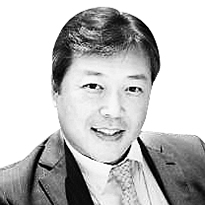Prepare a state visit to Japan in 22 years
Published: 12 Sep. 2024, 19:44
Updated: 12 Sep. 2024, 19:47

Kim Hyun-ki
The author is an editorial writer of the JoongAng Ilbo.
I made two confounding discoveries during my short business trip to Tokyo about 10 days ago. The first was with a bank ATM. The machine denied my cash withdrawal. When I inquired through an intercom, the receiver asked me to come to the bank window with a new residence card as my old one had expired a month ago. I never imagined the information on residency could reach banks in Japan even if it had expired a decade or two ago, not to mention a month before.
Japan is hardly connected. Few bother to renew an old bank account, driver’s license or health insurance license. I never imagined Japan could ever become up-to-date and digitalized. The remarkable changes have been propelled by the introduction of “My Number Card” — the individual identification card — as a part of Japan’s electronic integration of administrative systems.
The second discovery was more on the vexing side. When I demanded to cancel the account and cash out since withdrawing was difficult, the staff asked me for my hanko, or personal seal stamp. I hardly could have kept the stamp I had used to open an account more than 20 years ago. I couldn’t understand why I couldn’t get the money out when I was there personally. But the staff stoically cited the rules.
Even in the AI-driven era, a carved stamp is deemed more reliable in Japan than the real person or identification card. The framework may have changed, but the practices and manuals in the field are stuck in the past. After a dreary 90 minutes of wrestling, the bank outlet head finally came up with a compromise. He asked me to get any stamp with my name on it. To them, formalities mattered most to avoid any liability. The Japanese can eventually be won over through persistence and perseverance. They are different from North Koreans and the Chinese, who want to get their way no matter what.
Understanding the Japanese nature can help intergovernmental relationships. Bilateral relations have dramatically turned amicable under the Yoon Suk Yeol presidency. Certainly, the big system has changed. But the playbook in the field remain the same. The two countries will celebrate the 60th anniversary of their normalized diplomatic relationship next year. Seoul is hoping for a milestone joint statement in the vein of the monumental 1998 declaration between President Kim Dae-jung and Japanese Prime Minister Keizo Obuchi. But Tokyo is less enthusiastic than Seoul, as past issues should be revisited to compound the narrative of a joint declaration. The two governments would have to haggle over the wording of the apology and other details. Bureaucrats would hardly move beyond the “no more apology” principle. Even if they make some effort, the wording likely won’t please Koreans.
For a breakthrough, Seoul needs to persuade Tokyo to at least put up a proactive gesture. I personally think that an invitation of a state visit to Japan will do it. The last state visit by a Korean president was in 2003 by President Roh Moo-hyun. There were three others before — Kim Dae-jung in 1998, Roh Tae-woo in 1990 and Chun Doo Hwan in 1984.
A state visit after 22 years would include a courtesy call to the emperor. The emperor would make an address on the bilateral relationship. An apologetic mention of past issues can carry a different weight when it comes from an emperor.
The emperor’s message would set the tone of a joint statement by the two summits. If there is more to be said, President Yoon can use an invitation to the parliamentary podium to do so. Japanese Foreign Ministry officials and politicians won’t have to worry about the formalities and liability, and Korea would have earned a ceremonial feat for the 60th anniversary without having to go through the usual scorn from the progressive media and opposition parties about being submissive toward Japan.
If the idea is worthy of consideration, Seoul must hurry. Tokyo usually limits state visits to two a year. For next year, one will be reserved for the incoming U.S. president. The Korean president could best arrange a state visit timed with the opening of the Korean Pavilion at Expo 2025 Osaka in April or choose a date that can contain the new prime minister’s call to the Yasukuni Shrine. Like I said, Japan can be won over through persistence, or persistent persuasion to be exact. The Japanese will never act first toward the passive ones. It is their second nature. The latest outcomes in Korea-Japan diplomacy are the proof.










with the Korea JoongAng Daily
To write comments, please log in to one of the accounts.
Standards Board Policy (0/250자)